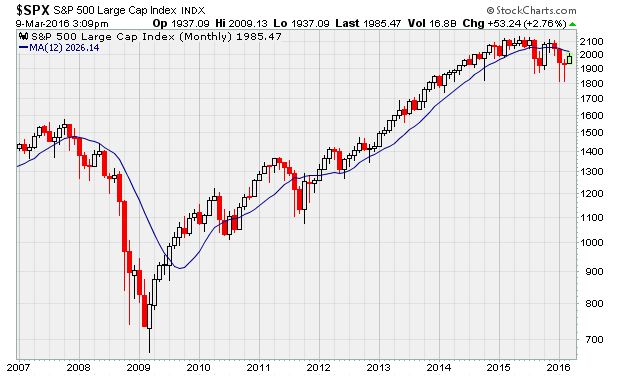Stocks have climbed for seven straight years -- can the good times last?
Wednesday marks the seventh anniversary of the current bull market, a steady climb from the depths of the financial crisis that started on March 9, 2009, when the Dow Jones Industrial Average closed at a low of 6,547.
Since then, the Dow -- boosted by extraordinarily accommodative monetary policy by the Federal Reserve, fiscal stimulus from the U.S. government, and the 2009 bailout of General Motors (GM) and Chrysler, among other factors -- has risen roughly 160 percent to reclaim the psychologically important 17,000 level. The benchmark index's all-time high of 18,351, reached last May, amounted a gain of more than 180 percent.
For investors forever gazing at the horizon, of course, the question is this: Will the bull market live to see its eight birthday?
This is all the more important since, by at least one measure, the bull market may already be dead. That's the takeaway from Ned Davis Research, which flagged a new bear market in the Dow on February 11 after it closed below its August 2015 low, for a peak-to-trough decline of greater than 13 percent after 145 trading days.
February 11 happened to mark the intra-day low of the recent selloff, however, with the Dow rallying nearly 10 percent off of its low of 15,503. Based on the criteria maintained by Davis, a new bull market would have to see a 30 percent rise over 50 calendar days or a 13 percent rise after 145 calendar days.
We haven't seen that yet, so at least by that definition the new bear market still stands. The more common definition of a bear market is a 20 percent decline from a previous high. From the May peak of 18,351 to the January low of 15,450, the Dow slid 15.8 percent.
The Russell 2000 fared worse, losing 21.7 percent between early December and the middle of February -- technically, that put small-cap stocks in bear territory. Since then, the index has rebounded to its early January levels. Unless new highs are set soon, the impression will be that the smallest, most sensitive stocks in the market are in fact in a new long-term downtrend.
Another bull/bear market indicator uses the 12-month moving average on the S&P 500. When the index is below that level, as it is now, the assumption is that we're in, or headed into, a bear market. When the index is above that level, a bull market reigns.
Currently, the line in the sand is right above the 2,000 level that stalled the rally out of the August low last summer and stalled the current rally out of the February low. The bulls need to hurry up and retake this level to avoid the impression they are losing control.
In order for this to happen, we need to see progress on a number of catalysts that have been weighing on sentiment: Fear that the Fed is tightening policy too fast, worries over downbeat corporate earnings, the drag from low energy and commodities prices, and concerns over the economic health of China, Japan and the eurozone.
The Fed's next policy decision on March 16 will be key in shaping investor sentiment. The best-case scenario would be a reduction in the number of expected interest rate hikes in 2016, aligning policymakers with futures markets, which are pricing in only a single rate hike this year.
And, to be fair, the bulls are understandably feeling a little fatigued. The bull market has lasted 2,556 days already, the fourth-longest uptrend since 1900. That run is eclipsed only by the roaring uptrend of the 1920s, the post-WWII ramp that started in 1947, and the dot-com years of the 1990s. In percentage gain terms, it's the market's fifth-best performance.
Still, it has been 294 calendar days since the Dow closed at a new high. According to Jeff Hirsch of Almanac Trader, "The longer it takes to reach a new high, then the higher the odds are that the bull [market] has already ended."

